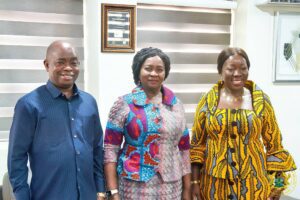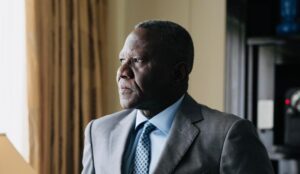
Source: Ghanaija
In a small village in the lush highlands of Kenya, a young boy named Kimani grew up surrounded by the vibrant traditions of the Kikuyu people. Kimani’s grandmother, Nyambura, was a revered storyteller, known for her rich tales that wove the history and values of their culture into every narrative. Every evening, under the baobab tree, she gathered the children of the village and shared stories that had been passed down through generations.
Nyambura’s stories were not just entertainment; they were lessons in life. She spoke of the importance of community, the wisdom of respecting elders, and the necessity of living in harmony with nature. Kimani listened intently, his young mind absorbing the teachings embedded in each tale. These stories shaped his understanding of the world and his place within it.
As Kimani grew older, he began to notice the influence of his culture in every aspect of life. The communal gatherings, the songs and dances, the rituals performed during planting and harvest seasons—all these practices were deeply rooted in the values Nyambura had taught him. He realized that culture was not just a part of life; it was the very fabric that held the community together.
Years later, Kimani found himself in the bustling city of Lagos, Nigeria, pursuing higher education. The city was a melting pot of cultures from all over Africa and beyond. Here, he met Kemi, a young woman from the Yoruba tribe. Kemi was passionate about her heritage and often spoke of the festivals, drumming, and intricate beadwork that defined her culture. Despite their different backgrounds, Kimani and Kemi found common ground in their shared appreciation for their respective traditions.
One evening, as they walked along the crowded streets of Lagos, they stumbled upon a street performance. A group of musicians played a blend of traditional and contemporary African music. The rhythms of the drums and the melodies of the flutes were a testament to the enduring power of culture in an ever-changing world. Kimani and Kemi were drawn to the performance, feeling a deep connection to the music that transcended their individual cultural differences.
Kimani began to understand that culture was not static; it evolved with time while still preserving the essence of its origins. In Lagos, he witnessed how people from diverse backgrounds could come together and create something beautiful. This fusion of cultures did not diminish their unique identities; instead, it enriched them, adding new dimensions to their heritage.
As part of his studies, Kimani traveled to various African countries, including Ghana, Senegal, and Ethiopia. In Accra, he met Kwame, a scholar who dedicated his life to preserving the history and culture of the Ashanti people. Kwame believed that understanding one’s past was essential for shaping a better future. He showed Kimani the royal kente cloth, explaining how each pattern told a story and represented specific values and historical events.
In Dakar, Senegal, Kimani encountered Fatou, an artist who used her paintings to depict the struggles and triumphs of her people. Her vibrant canvases captured the essence of Senegalese life, from the bustling markets to the serene landscapes. Fatou’s work was a powerful reminder of how culture could be expressed and preserved through art, offering a window into the soul of a people.
In Addis Ababa, Ethiopia, Kimani met Amanuel, a musician who played the traditional krar, a six-stringed lyre. Amanuel’s music was a blend of ancient Ethiopian melodies and modern influences. He explained to Kimani how music was a universal language that could convey emotions and stories that words often could not. Through Amanuel, Kimani saw how culture could adapt and thrive in new forms while still honoring its roots.
Throughout his travels, Kimani learned that culture was not just about preserving traditions; it was about celebrating them, adapting them, and passing them on to future generations. He saw how culture provided a sense of identity and belonging, offering comfort and guidance in an ever-changing world. Whether it was through stories, music, art, or rituals, culture was the thread that connected people to their past and to each other.
Returning to Kenya, Kimani felt a renewed sense of purpose. He wanted to ensure that the rich cultural heritage of his people would continue to thrive. He started a community center where children could learn about their traditions through storytelling, music, and dance. Nyambura, now in her twilight years, was a frequent visitor, sharing her wisdom with the younger generation.
Kimani’s initiative attracted attention from across the region, and soon, people from different communities came together to celebrate their diverse cultures. They shared stories, exchanged knowledge, and created a tapestry of traditions that highlighted the beauty of Africa’s cultural diversity. This collective effort not only preserved their unique identities but also fostered a spirit of unity and mutual respect.
In the end, Kimani understood that culture was indeed essential. It was the heartbeat of humanity, the source of identity, and the foundation of community. It was through culture that people could connect, learn, and grow. As he watched the children of his village dance to the rhythms of the drums under the same baobab tree where he once listened to his grandmother’s stories, Kimani knew that the legacy of culture would endure, guiding future generations just as it had guided him.
Through his journey, Kimani realized that culture was not a relic of the past but a living, breathing force that shaped and enriched human life. It was the compass that pointed towards a shared future, where the wisdom of the ancients met the innovations of the present, creating a harmonious and vibrant world. And in that world, the essence of culture was not just preserved but celebrated, cherished, and continually reinvented, ensuring its vital role in human life for generations to come.








